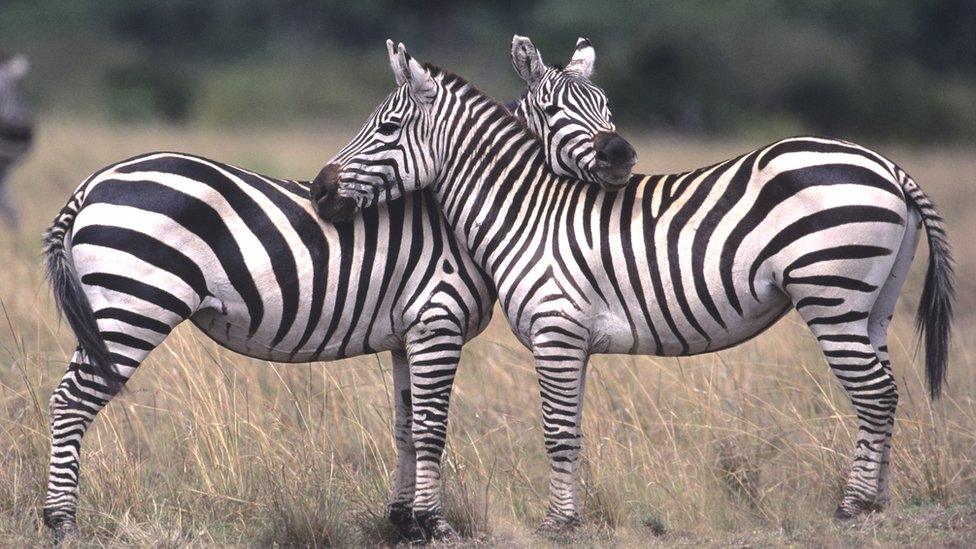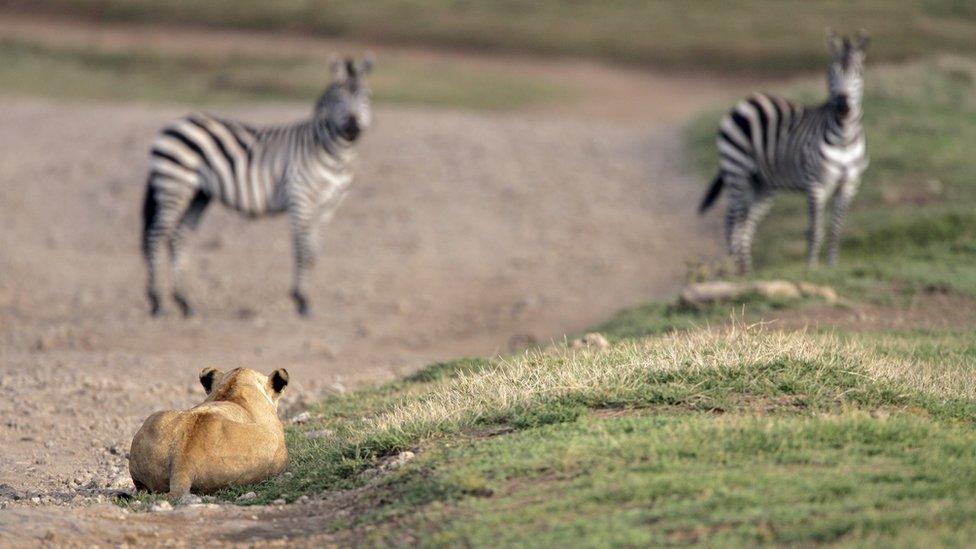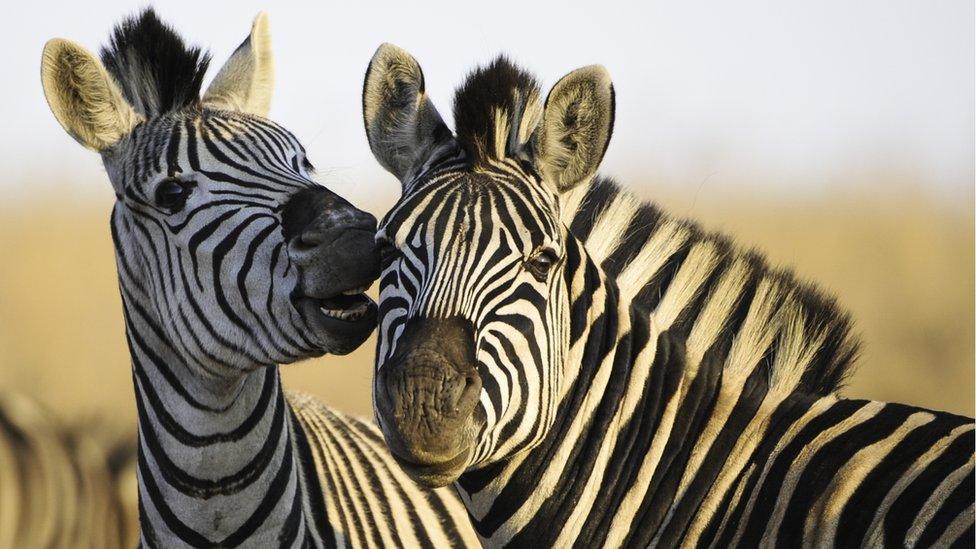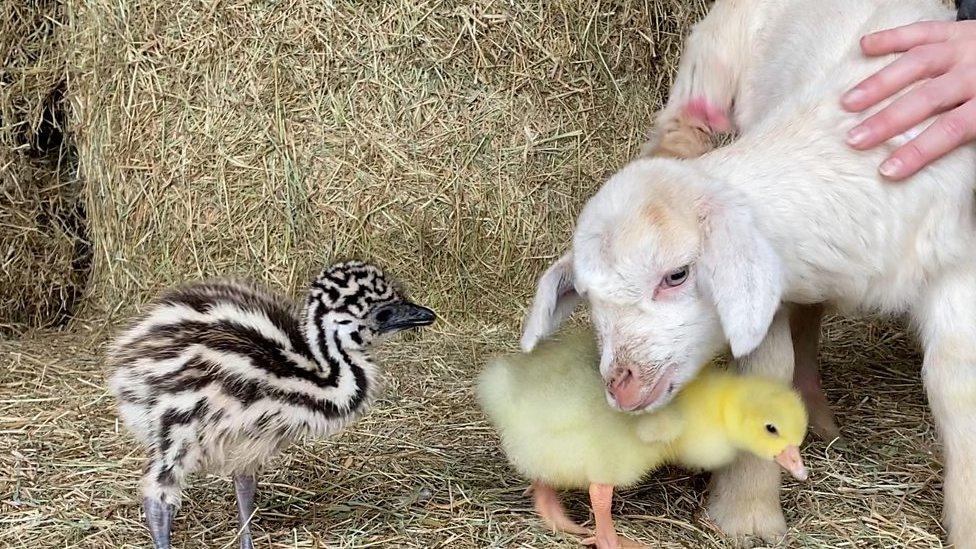Grey camouflage is better than zebra stripes, according to new study
- Published
- comments

For a long time, scientists have tried to understand why zebras have stripes and exactly how their unique black and white pattern helps protect them from potential predators.
It's a question still being explored, and some biologists have said it could be down to something known as the 'motion dazzle' hypothesis - this idea states that high-contrast patterns can make it harder for predators to track a moving target.
According to this idea - zebra developed stripes to keep them safe.
However, new research now suggests dull grey camouflage is actually much more effective in keeping animals safe from other hungry mammals compared to zebra stripes.
Anna Hughes from the University of Cambridge explains
The study found that low-contrast targets with fewer visible features were more difficult for predators to catch when they're on the move.
Scientists at the University of Exeter tested this theory using a touch-screen game called Dazzle Bug.
People visiting the Eden Project in Cornwall were invited to play the game where they had to catch a moving rectangular "bug". More than 77,000 people took part, tracking a total of more than 1.5 million bugs.
The bug's patterns were programmed to change so the scientists could determine what the best camouflage strategy was.
"Surprisingly, targets evolved to lose patterns and instead match their backgrounds," said senior author Dr Laura Kelley of the Centre for Ecology and Conservation at Exeter's Penryn Campus in Cornwall.
"Our results indicate that low-contrast, featureless targets were hardest to catch when in motion."

The new study suggests animals with grey, featureless skin are more difficult for predators to catch compared to zebras
Lead author Dr Anna Hughes added: "The presence of highly visible and striking patterns on many animals such as zebras has puzzled biologists for over a century, as these markings are conspicuous to predators.
"Early naturalists suggested that these patterns might create 'motion dazzle', making it hard for predators to estimate the speed or direction of their prey.
"Dazzle patterning was used on ships in the First World War and has been tested in numerous studies, but its protective effects remain unclear - largely due to experiments being small-scale tests of a limited range of patterns."

Zebras are known for their black and white stripes
Dr Hughes believes the her team's latest findings present clear evidence against the motion 'dazzle hypothesis' and she believes the mechanisms animals like zebras use to protect themselves when they're on the run may in fact be very different to those previously assumed.
- Published27 March 2021

- Published2 December 2020
